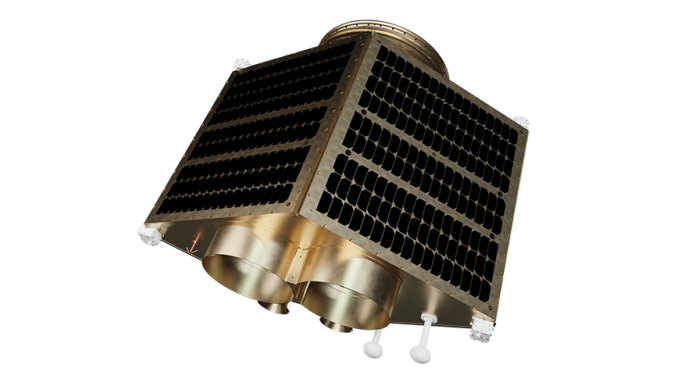EOS SAT-1

EOS SAT-1 is an optical Earth observation satellite manufactured by Dragonfly Aerospace that is equipped with two state-of-the-art DragonEye cameras that can monitor up to 1 million km² per day.
The satellite is one of seven in the first agriculture-focused satellite constellation. EOS SAT-1 is designed to support the implementation of sustainable agriculture methods and forestland monitoring with high-quality data and analysis.



Satellite structure
The satellite bus structure was manufactured and assembled at the Dragonfly Aerospace facility in Stellenbosch, making it the first commercial imaging satellite to be built by a South African company.
Components such as the telemetry and telecommand radios, which transmit satellite health data and receive commands, and the high-speed payload data radios used to transmit captured image data were also manufactured at the facility. The two DragonEye optical imagers capture high-resolution images in 11 different spectral bands for precision agriculture data analysis.
EOS SAT-1 is proud to utilise the Neuraspace space traffic management platform for conjunction analysis and receiving manoeuvre suggestions. This safeguards the satellite and contributes towards the overall reduction of space debris.
The Mission
EOS SAT-1 is designed to observe the Earth's surface in optical and infrared spectrums and is the first satellite of the constellation tasked explicitly with monitoring agricultural and forest lands. Images from EOS SAT-1 can deliver valuable information for harvest monitoring, such as soil moisture, yield prediction, and biomass levels, as well as applications such as mapping, seasonal planning, and infrastructure monitoring.
The data gathered will help in preventing the excessive use of pesticides and fertilisers, reducing food waste, addressing the effects of climate change on agricultural and forest lands, and assisting policymakers in making informed decisions based on the obtained satellite data to mitigate the food crisis.
Dragonfly Aerospace will acquire the imagery data using four ground stations in different parts of the world to ensure the finest output.
EOS SAT-1
Satellite
500 km
Orbit
3 January 2023
Launch Date
2 x DragonEye
Onboard Imagers
